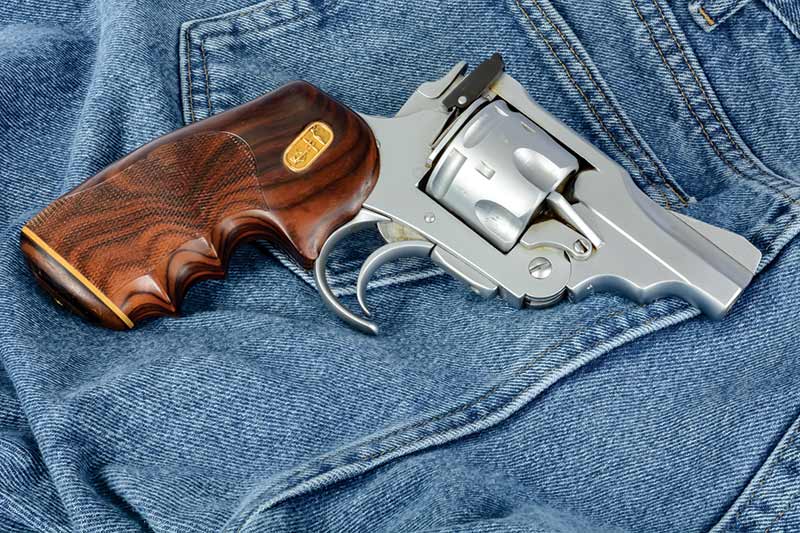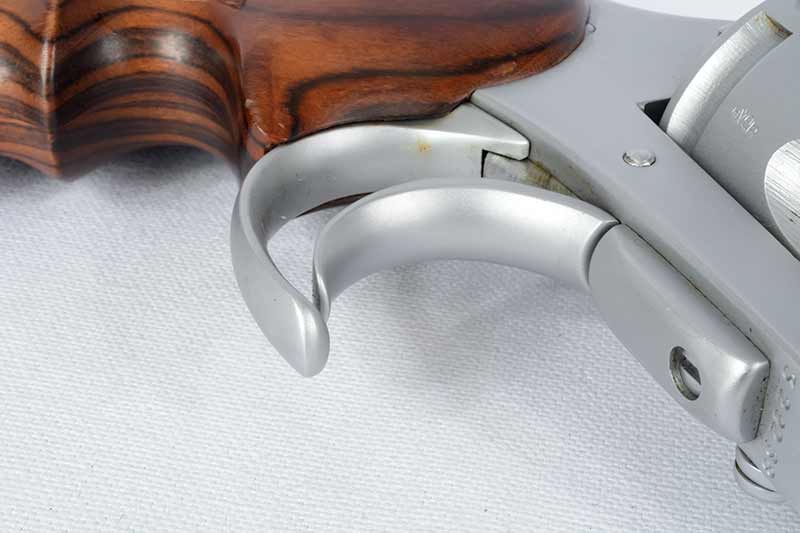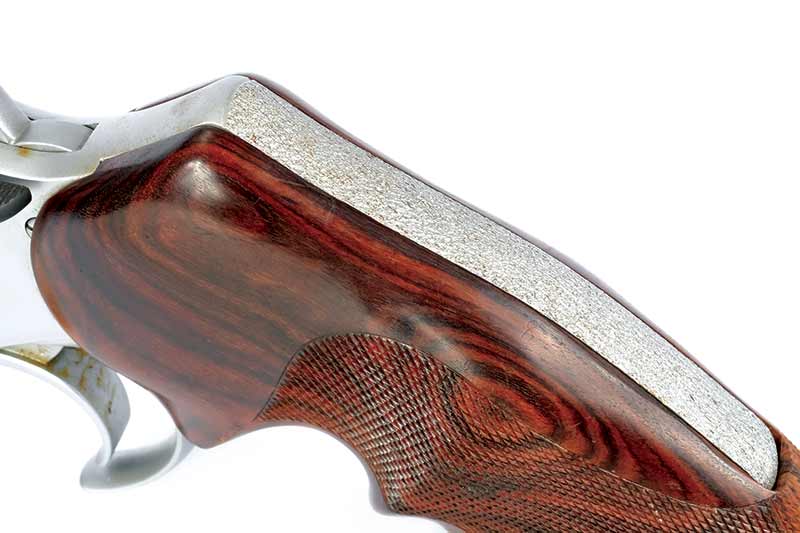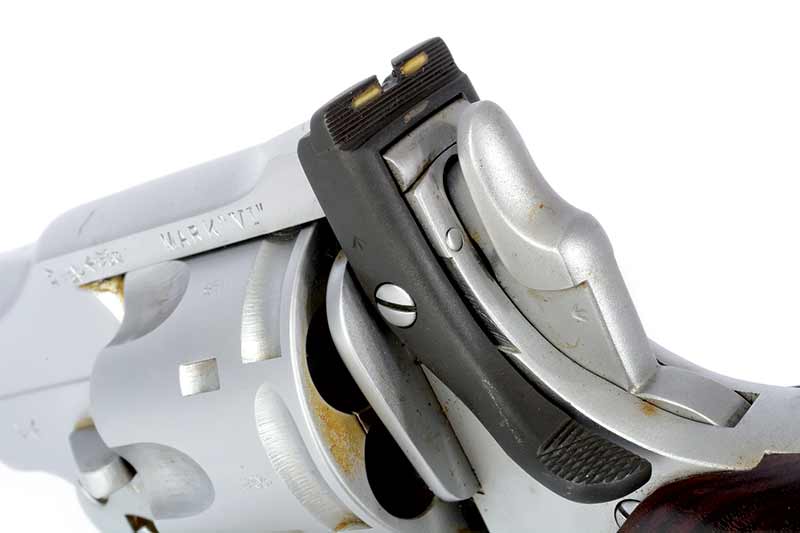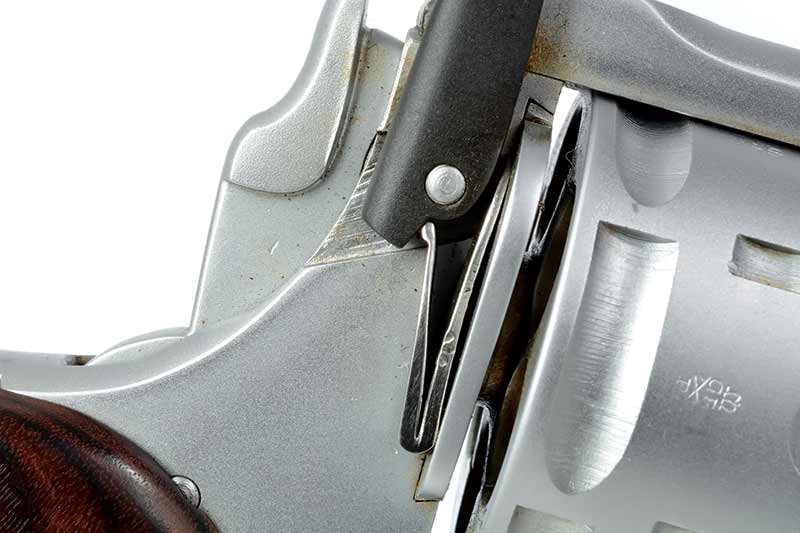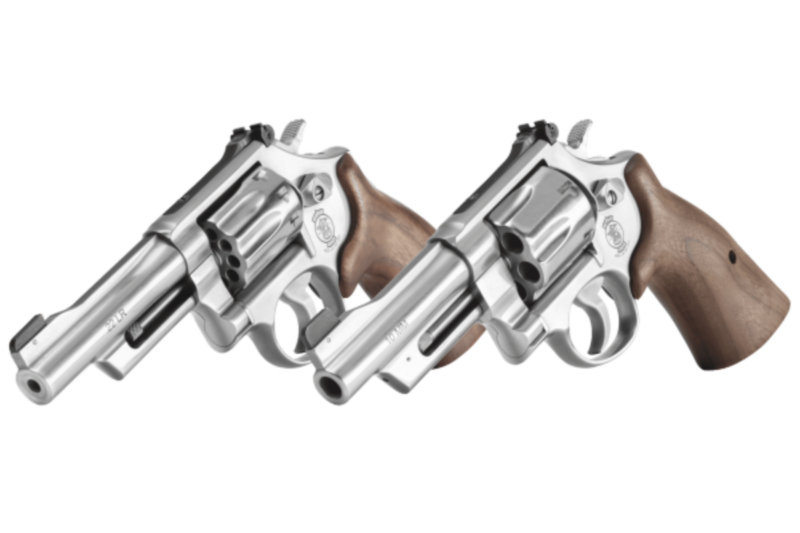Novak Fitz Special Webley .455 Conversion: You’ve Never Seen This…
Most established pistolsmiths have a particular gun or style for which they are known, but this doesn’t necessarily mean it’s all they do — especially early on in their career, before the style has become solidified. While Wayne Novak is known for M1911s, Hi-Powers and his groundbreaking sight system, which has become so much a part of modern pistol design it’s taken for granted, it’s certainly not all he’s ever done.
In 1984, not long after moving to Parkersburg, W. Va., after two years working with Armand Swenson, one of Novak’s repeat customers asked him to convert a revolver to a Fitz Special. John Fitzgerald, who worked for Colt and is at times credited as the father of the Detective Special and other snub-nosed revolvers, created the Fitz Special by taking a.45 caliber revolver, lopping off the barrel to 2″ or so, bobbing the hammer to make it snag-free, rounding the butt and completely removing the front of the trigger guard to make it faster to shoot. A truly fearsome looking thing, and for those who’ve never handled one, it makes for a real chunk of a gun. Apparently pleased with the cut-down Colt Wayne had made for him, the customer returned with a Mark VI Webley revolver and asked for the same package.
“Nice” Personality?
The Mk VI chambered in either .455 Webley, or 45 ACP, was the last of the big Webleys used by the British military everywhere from Ireland’s 1916 Easter Rising to both World Wars, the Boer War, Vietnam and anywhere else upon which the English colonial sun did not set. Webleys have never been accused of being particularly good-looking guns, but they have their merits, which include a fast top-break mechanism that ejects all the empties simultaneously.
Unfortunately, the cylinder latch and rear sight — which was somewhat vestigial anyway — are a single unit, which means adding useful rear sights is a challenge. As an aside, if you’re wondering why this gun has been hard-chromed except for the cylinder latch, now you know: It was the best way to keep the sighting surfaces black instead of a glare-inducing silver. To give the Webley a real sight picture, Wayne made a shelf on the top of the latch and silver-brazed on a block of steel that he then shaped into a rear sight, complete with serrated face, and had tritium vials installed by Self Powered Lighting to create night sights.
Similarly, after shortening the 6″ factory barrel, he added a front sight with a long ramp he hand-serrated through the hard chrome after the gun was finished, which meant the sighting surfaces could be blued. A single tritium vial was also added lengthwise. In those early days of self-luminous sights, when guns didn’t just come standard with them, this was very high tech.
Across The Pond Fitz
The rest of the gun got the classic Fitz treatment; an artfully trimmed hammer, excised triggerguard, and custom checkered wood grips from Hogue, in which the owner’s gold hieroglyph cartouche was inlet. While the grips may look a little large, if you’ve spent much time shooting little revolvers, you’ll appreciate them, as well as the matting on the exposed backstrap.
I’m not going to say just anyone can build a Fitz Special, because they can’t. But Novak’s application of the Fitz principles to the far-different Webley platform required a bit more work and imagination, and resulted in a well-thought out, formidable package that’s concealable and has truly useful sights. Fitting, since well-thought-out defensive pistols are the hallmark of Novak, who has become one of the most influential pistolsmiths (and the most influential sight designer) of our generation.
Subscribe To American Handgunner

Get More Revolver Content Every Week!
Sign up for the Wheelgun Wednesday newsletter here:

